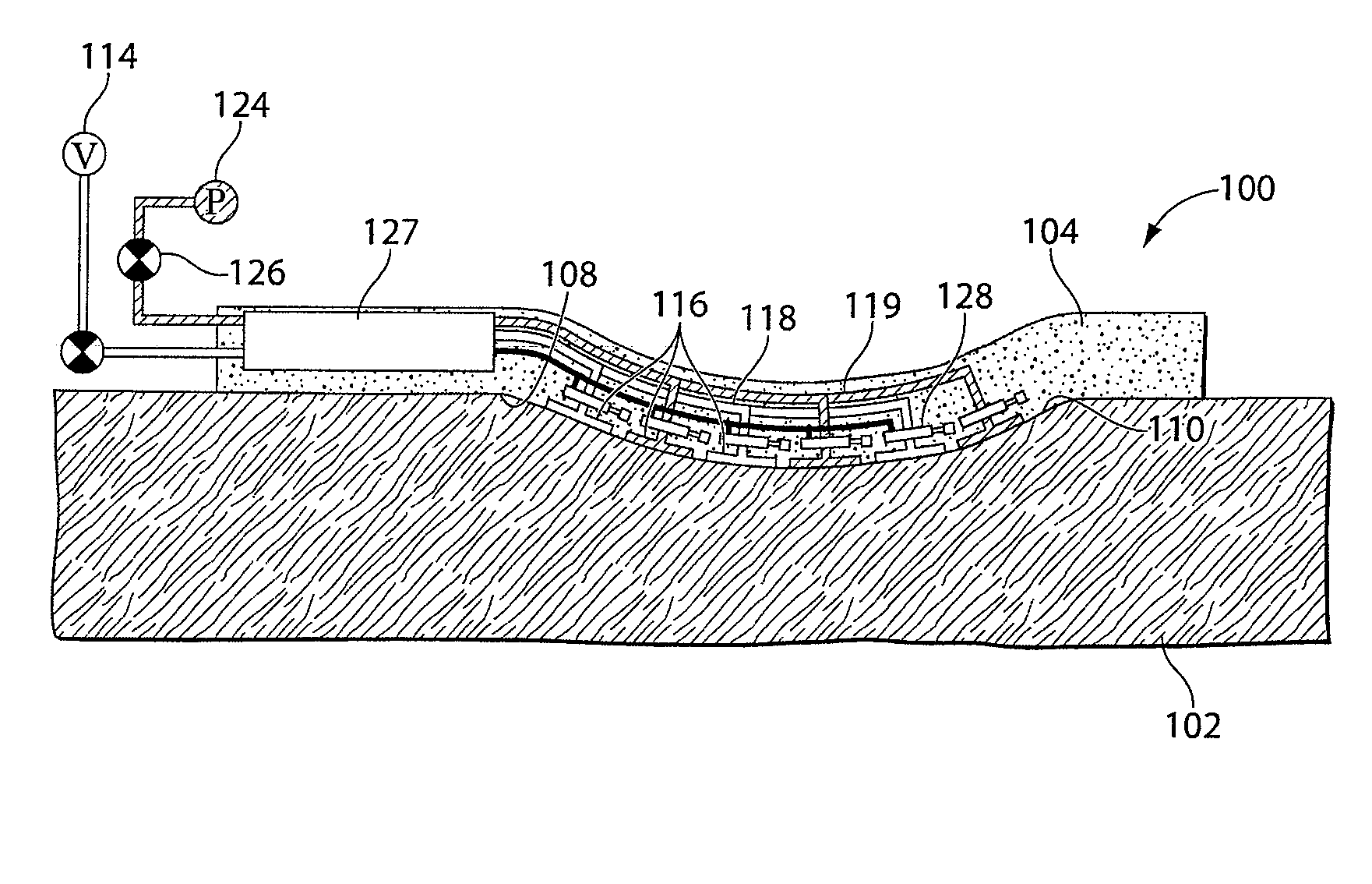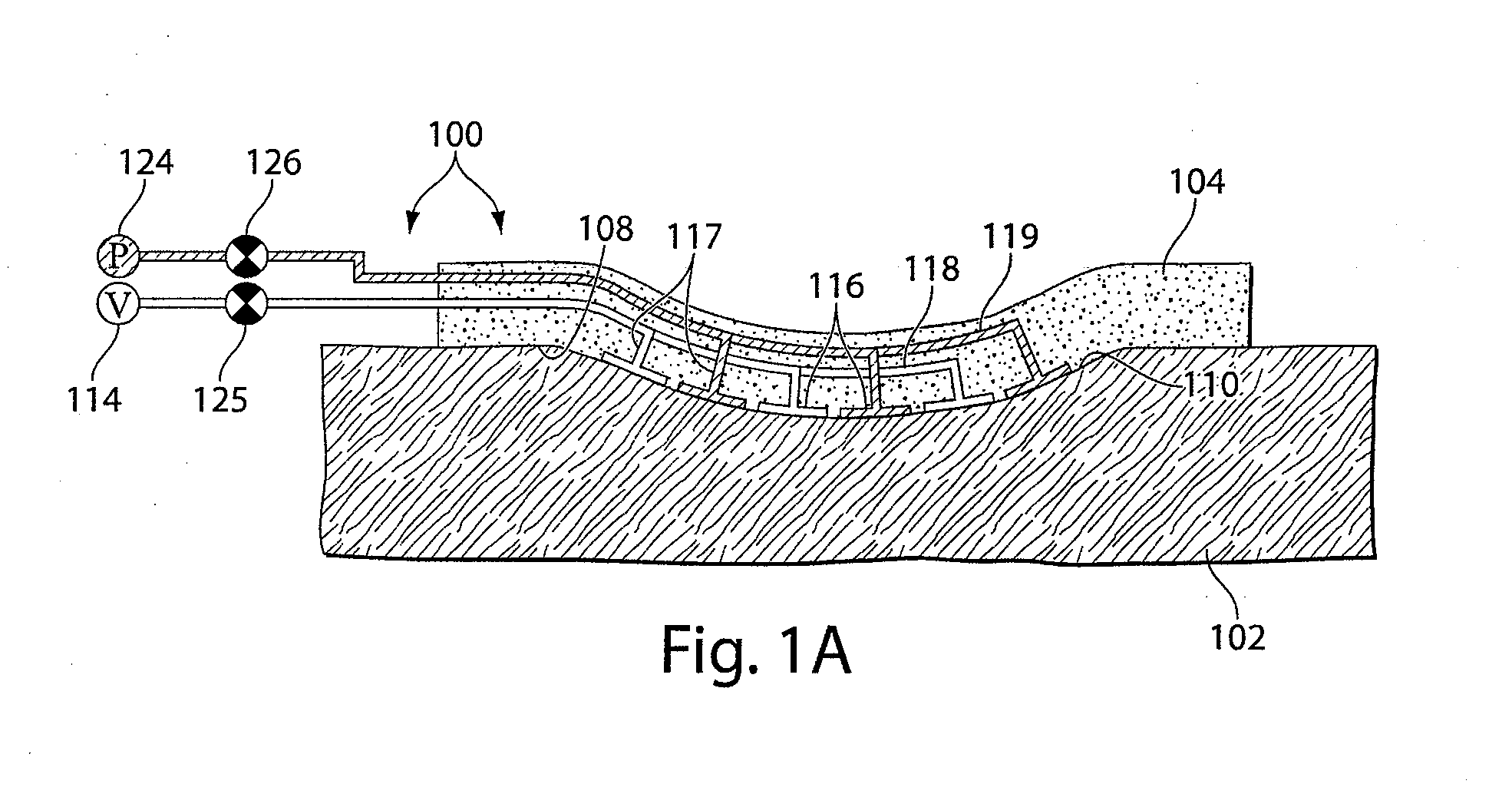Wound healing device
a wound healing and tissue technology, applied in the direction of prosthesis, wound drain, application, etc., can solve the problems of tissue normally protected by the covering being subject to loss of biologic compartmentalization, fluid loss, electrolyte imbalance, etc., to accelerate wound healing, promote wound healing and/or tissue growth, and reduce hospital stays , the effect of reducing complications including infection
- Summary
- Abstract
- Description
- Claims
- Application Information
AI Technical Summary
Benefits of technology
Problems solved by technology
Method used
Image
Examples
Embodiment Construction
[0056]Physical forces that are applied to tissues at the macroscopic scale are redistributed to the microscale to affect individual cellular form and function. However, when these forces are applied homogeneously over large areas, the level of strain or deformation experienced by individual cells can be quite small, thus limiting the cellular response. In addition, global force applications typically result in a wide variety of stresses within a wound. Devices are currently available that assist in wound healing by applying mechanical forces on the macroscale (evenly over areas greater than 1 cm2) including: tension wound closure devices; vacuum assisted closure devices; and devices applied in distraction osteogenesis. According to one aspect of the invention, locally concentrated forces are applied within multiple smaller regions (in some embodiments less than 1 mm2, and in some embodiments less than 100 microns2), so as to amplify and in some cases optimize the forces that are exp...
PUM
 Login to View More
Login to View More Abstract
Description
Claims
Application Information
 Login to View More
Login to View More - R&D
- Intellectual Property
- Life Sciences
- Materials
- Tech Scout
- Unparalleled Data Quality
- Higher Quality Content
- 60% Fewer Hallucinations
Browse by: Latest US Patents, China's latest patents, Technical Efficacy Thesaurus, Application Domain, Technology Topic, Popular Technical Reports.
© 2025 PatSnap. All rights reserved.Legal|Privacy policy|Modern Slavery Act Transparency Statement|Sitemap|About US| Contact US: help@patsnap.com



